Tourism
Tourism may mean traveling for pleasure and education. It is also a business in the form of providing services to tourists by providing them accommodation and entertainment. In many countries, tourism is an industry for earning inland revenue and foreign exchange through many businesses like airlines, shipping, hotels and restaurants, finance companies, tour operators, travel agents, car rental firms, caterers and retail establishments. These concerns together contribute significantly to the overall development of a country's economy and to its cultural diversification and assimilation.
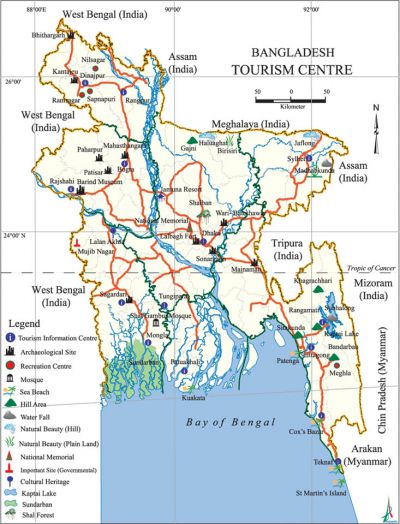
Bengal had always attracted tourists. Travelers from different parts of the world had interest in this part of the world from very ancient times. They visited Bengal with varied purposes. Some came with missionary objectives, some with motives of exploring business opportunities, some came to attend seats of learning and some for meeting curiosity.
Notable them were Pliny, the Elder of Greece (visited tamralipti in the first century), Ptolemy (Claudius Ptolemaeus) of Egypt (gangaridai or gauda, second century), fa-hien of China (Tamralipti, 5th century), hiuen-tsang of China (mahasthan, samatata, karnasuvarna and Tamralipti, 7th century), ibn battuta of Morocco (chittagong and sonargaon, 14th century), ma huan of China (Gauda, 15th century), fei hsin of China (Chittagong and Sonargaon, 15th century), duarte barbosa of Portugal (areas alongside the ganges, early 16th century), caeser frederick of Italy (Chittagong, late 17th century), ralph fitch of England (Chittagong, late 16th century), sebastien manrique of Portugal (Chittagong, early 16th century) niccolao manucci of Italy (dhaka, mid-17th century) and Jean Tavernier of France (Dhaka, mid 17th century).
As tourism in its modern sense is a relatively recent phenomenon, it took its start in the present Bangladesh area only during the 1960s. Tourists from abroad came to see and enjoy the sea beach, scenic beauty of the landscape covered with lavish greens and the web of rivers, tribal culture, religious rituals, historical places, forests, wild life and hill resorts.

The sundarbans of Bangladesh is the largest mangrove forest in the world and a natural habitat of the Royal Bengal Tiger. Bangladesh is located in an advantageous position from tourism point of view. It is in the macro Asiatic Air Traffic Corridor. Being so located it is comparatively easier for this country to share this traffic for promoting tourism.
Immediately after liberation, the government of Bangladesh set up Bangladesh Parjatan Sangstha (Bangladesh Tourism Organisation), with a view to developing tourist industry in the country. The organisation was restructured into Bangladesh Parjatan Corporation in 1973. The corporation drew up a five-year plan within the framework of the first Five-Year Plan (1973-78) of economic and social development of the country to provide essential facilities and to exploit the natural attractions for increasing the inflow of tourists and make their stay in the country entertaining. Ever since the government made budgetary allocations for the corporation in all successive plans to implement programmes and activities for development of tourism.
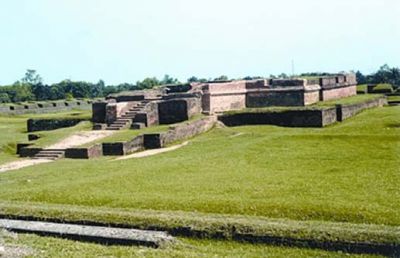
The facilities already created by the corporation in Dhaka, Chittagong, cox's bazar, kaptai, sylhet, rangamati and elsewhere have had a considerable effect on local and foreign tourists.
The National Tourism Policy of 1992 considered tourism 'as an industry of due priority' and underlined a tourism development and marketing strategy. The Industrial Policy of 1999 identified tourism as a 'thrust sector'. The government encourages foreign investors in this sector both in the form of joint venture and as 100% foreign investment.
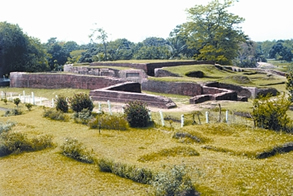
Bangladesh offers tourists a variety of attractions in almost every part of the country. In rajshahi, the Bara Kuthi on the bank of the padma and the varendra research museum are among the main attractions for the lovers of antiquity. The silk factory of the bangladesh sericulture board is another place of interest for the tourists. The important group of Islamic monuments of medieval Bengal at gaur is situated on the border of Rajshahi. Gaur is 88 km from Rajshahi town and takes about 3 hours' drive by road. The Department of Archaeology of the government took over the Gaur monuments scattered over an area of more than 6 sq km.
The Sultanate monuments of Gaur attract a large number of tourists both locals and foreigners include mainly the darasbari mosque (built in 1470), the darasbari madrasa, dhunichawk mosque, chhota sona mosque (1493-1538), khania dighi or Rajbibi Mosque. puthia is situated about 29 km off Rajshahi town on the way to natore. A fine group of late medieval Hindu temples is located at Puthia. Among these, the Gobinda Temple (built in 1825-95) and the Shiva Temple (1823) are important. Puthia Palace, built by hemantakumari devi in 1895, is also an elegant building worth visiting.
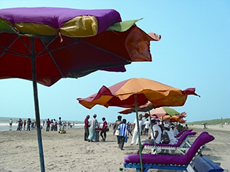
The famous dighapatia rajbari, about two kilometres north of Natore, has been restored and is now designated as Uttara Gana Bhaban (People's House for the northern region) used by the head of state or government when occasion arises.
This vast palace occupying an area of 43 acres of land was originally the palace of the Maharaja of Dighapatia. The Bangladesh Parjatan Corporation's package tour to the northwestern region includes it for overnight stay. The natore rajbari (Boro Taraf and Chhoto Taraf Palaces) is also worth visiting.
paharpur is a small village 5 km west of jamalganj railway station. Here the remains of the largest known monastery south of the himalayas have been excavated. This 7th century archaeological find covers approximately an area of 27 acres of land. The entire establishment occupies a quadrangular court measuring more than 900 sq ft and from 12 ft to 15 ft in height. With elaborate gateway complex on the north, there are 45 cells on the north and 44 in each of the other three sides with a total number of 177 rooms. The architecture of the pyramidal cruciform temple is profoundly influenced by those of Southeast Asia, especially Myanmar and Java.
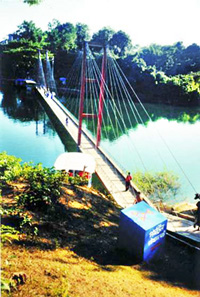
It took its name from a high mound, which looked like pahar or hillock. A site museum built recently houses the representative collection of objects recovered from the area. Another leading place of tourist's attraction mahasthangarh is located at a distance of 18 km north of bogra town. It is the oldest archaeological site of Bangladesh on the western bank of river karatoya. The spectacular site is an imposing landmark in the area having a fortified enclosure. Beyond the fortified area, other ancient ruins fan out within a semicircle of about 8 km radius.
Several isolated mounds govinda bhita Temple, khodar pathar bhita, mankalir kunda dhap, Parsuram's Palace and Jiyat Kunda surround the fortified city. This 3rd century BC archaeological site is still held to be of great sanctity by Hindus. Until recently, thousands of Hindu devotees joined the bathing ceremony on the bank of river Karatoya every year (mid-April). A visit to the Mahasthangarh site museum opens up a wide variety of antiquities, ranging from terracotta objects to gold ornaments and coins recovered from the site. At a short distance from the monastery there was a stupa built by Asoka on the site where Buddha explained his laws to the Devas. The bhasu vihara was visited by the Chinese traveler Huen Tsang sometime in the middle of 7th century. Mahasthangarh is also famous for a Mazar-sharif (holy grave) of a Muslim saint situated on the top of a hillock

The beautiful kantanagar temple near dinajpur town was built by Maharaja Pran Nath of Dinajpur in 1752. It was originally a nava-ratna (nine-towered) temple, crowned with richly ornamented towers. Unfortunately, these ornate towers collapsed during an earthquake at the end of 19th century.
In spite of this, the monument claims to be the finest extant example of its type in brick and terracotta built by Bengali artisans. Every inch of wall surface both inside and outside of the temple is profusely decorated with exquisite terracotta plaques, representing flora, fauna, geometric motifs and figures.
The historic mosque-city of bagerhat is located about 25 kilometres southeast of khulna attracts a large number of tourists. Bagerhat was founded by Saint Ulugh khan jahan in early 15th century. Khan Jahan adorned his city with many mosques, bridges, roads, palaces, mausoleums and other public buildings. Among the many surviving monuments of Khan Jahan, shatgumbad mosque is the most magnificent and largest brick mosque in Bangladesh.

As the largest contiguous area of mangrove forest in the world, the Sundarbans are unique and not found elsewhere in the south Asia region. Sundarbans are famous for the Royal Bengal tiger, numerous deer, crocodiles, birds and other animals.
With a picturesque hinterland of large hill-forests and lakes, Chittagong is the second largest city of Bangladesh and a busy international seaport. It has many attractive places of interest like the shrine of bayajid bostami, World War II cemetery, Foy's Lake, Ethnological Museum, Zia Memorial Museum, Patenga Beach and sitakunda.
With miles of golden sands, towering cliffs, surfing waves, rare conch shells, colourful pagodas, Buddhist temples and tribes, delightful sea food and world's longest unbroken (120 km) beach sloping gently down to the blue waters of the bay of bengal against the picturesque background of a chain of hills covered with deep green forests, Cox's Bazar, 152 km south of Chittagong, is one of the most attractive tourist spots. Visits to the fascinating picnic spot at Himchhari, teknaf, southernmost tip of Bangladesh, Buddhist temple at ramu and nearby islands of Sonadia, st martin's island and Moheskhali are sure to be experiences of a lifetime.

The Hill districts of rangamati, khagrachhari and bandarban with their perennial forests, emerald-blue waters of kaptai lake, colourful tribal life and culture, attractive handicraft of the artisans beckon one to a world of panoramic beauty.
A pleasant and picturesque drive of 64 km from Chittagong brings to a huge expanse of blue water ringed with tropical forests. It is the famous man-made Kaptai Lake (680 sq km) formed by damming the karnafuli river. Only 3 km from Kaptai along Chittagong Road lies the ancient Chit Morong Buddhist temple having beautiful Buddhist statues.
sylhet town is located 350 km northeast of Dhaka between Khasi-Jaintia Hills and the Tripura Hills. Sylhet district is famous for tea production. Sylhet is considered to be a holy city by the Muslims because of the mazars (graves) of saint shah jalal (R), shah paran (R) and others.
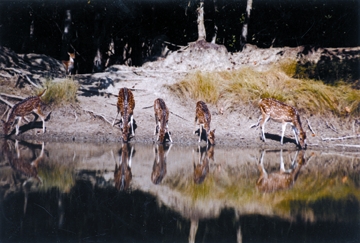
About eight km to the west of comilla town which is situated 114 km southeast of Dhaka lies a range of low hills known as Mainamati-Lalmai ridge, an extensive centre of Buddhist culture. At Shalvan in the middle of the ridge, excavations laid bare a large Buddhist vihara and imposing central shrine. It has revealed valuable information about the rule of the Chandra and Deva dynasties, which flourished here from the 7th to 12th century. The whole range of hillocks run for about 18 km and is studded with more than 50 sites. bangladesh academy for rural development (BARD) founded by akhter hameed khan was established nearby in 1959 and is known for its pioneering role in cooperative movement.
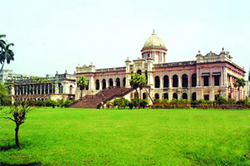
Dhaka is famous for its archaeological and historical sites. In its present location on the bank of river buriganga, Dhaka was founded and made the provincial Mughal capital in 1608. It enjoyed this status till 1717. The lalbagh fort or Fort Aurangabad, was constructed by Prince Muhammad Azam, Viceroy of Bengal and third son of Mughal emperor aurangzeb, in 1678 and his successor, shaista khan. The decorative walls and gates, a fine masonry tank, the audience hall, mosque, tomb of Pari Bibi are important tourist attractions inside the fort. husaini dalan, the famous imambara of the Shiah Community, a faction of Muslims, is located behind the dhaka medical college and hospital. It was probably built around 1642. bara katra, one of the most important remains of the Mughal period, is situated on the north bank of the river Buriganga at Chawk Bazar. Built in 1644 by Abdul Qasim, Diwan of Shah Shuja, the Katra was so great in its beauty that its inscription states that it puts 'High Heaven' to shame. chhota katra is situated about 200 yards east of Bara Katra. It was built in 1663 by Shaista Khan. Fort of khizrpur is situated at narayanganj on the western bank of the shitalakshya. sonakanda fort is situated on the eastern bank of the river Shitalakshya about a mile further downstream. Both the forts exist in an excellent state of preservation and still bear the memories of the famous isa khan and mir jumla. The successor of Shaista Khan, Nawab ibrahim khan 2nd built the jinjira palace around 1689-97. It stood on the other side of the river Buriganga opposite Bara Katra. The two palaces were said to have been connected by a wooden bridge across the river. The palace was surrounded by a moat.
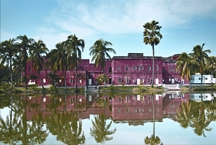
sonargaon, an old capital, is about 26 km east of Dhaka, close to the highway to Chittagong. About a mile from the turning, is the village of Mograpara, which contains many old ruins. ahsan manzil or the Nawab Bari is situated on the bank of the river Buriganga. The palace was originally built in 1872 by Nawab abdul ghani. The old building was reconstructed after it was heavily damaged by a tornado in 1888. Recently the building has been taken over by the government and made into a museum.
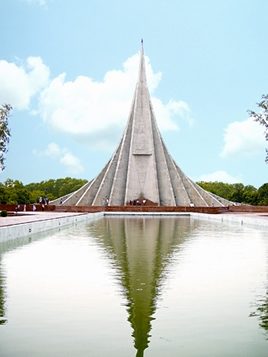
baldah garden is a unique creation of Narendra Narayan Roy, the late landlord of Baldha. Established in 1904 at Wari in Dhaka City (opposite the Christian cemetery), the garden with its rich collection of indigenous and exotic plants is one of the most exciting attractions for naturalists and tourists. The National botanical garden at Mirpur, near the Dhaka Zoo, is spread over an area of 205 acres of land and has a large collection of local and foreign plants. Outstanding attractions are 100 varieties of roses, 100 varieties of bamboo, many varieties of sandalwood and an old banyan tree. It is a quiet place away from the main city to meet nature. Dhaka zoological garden, popularly known as Mirpur Zoo and located at a distance of about 16 km from the city centre was established on 230 acres of land. It houses nearly 1,400 animals and birds belonging to 124 species, the latest addition being the Kangaroo and Tapir. Busy enclosures are those of lions, Royal Bengal Tiger, panthers, deer, monkeys, chimpanzees, pythons, crocodiles, elephants and colourful birds.
The National Park at Bhawal, 40 km north of Dhaka on the highway to mymensingh, is an ideal spot for visitors, artists, photographers, ornithologists and tourists. It has a 16,000-acre recreational forest. Main flora is garjan (Assam sal) and the fauna include small bears, monkeys, porcupines, foxes, pythons, lizards and birds.
|
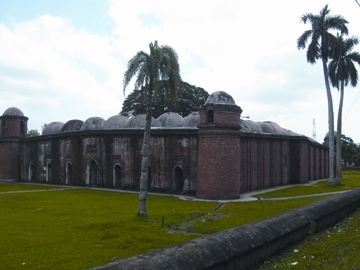
The bangladesh national museum was established as Dhaka Museum at Nimtali in 1913 and was shifted to its new imposing building at Shahbagh, Dhaka in 1983. It contains a large collection of sculptures and paintings of the Hindu, Buddhist and Muslim periods, old coins, metal images, ivory and silver filigree works, textiles including the world famous muslin fabric, embroidered quilt (nakshi kantha), arms and ammunitions of the bygone warriors, varieties of fine handicrafts and models of the village and town life, contemporary paintings and sculptures. The valuable articles of the heroic liberation war of Bangladesh are also there.
The Folk Art Museum at Sonargaon was established in 1975 to fulfil the dream of the celebrated painter zainul abedin. The museum has a very rich collection of folk objects of different materials and forms of aesthetic and utilitarian value. These undoubtedly reflect the sentiments, impulses, temperament moods, idiosyncrasies, skills and expertise of the artists and artisans.

The Ethnological Museum in Chittagong houses objects of 12 different tribes of Bangladesh and also of many tribes of Australia, India and Pakistan. There are small archaeological museums at Lalbagh Fort, Mahasthangarh, Paharpur and Mainamati.
The Varendra Museum at Rajshahi has a rich collection of objects of Mohenjodaro and also of the 16th to 19th centuries. Its rich collection contains interesting objects of Hindu, Buddhist and Muslim heritage. The Tribal Cultural Museum in the Hill Tracts region was established at Rangamati town in 1978 and is run by the Tribal Cultural Institute. It preserves valuable objects and articles of different tribes depicting their socioeconomic cultural and historical tradition. These include typical tribal Dresses, ornaments, arms and ammunition, coins, statues made of wood, bronze and other metals, musical instruments, ivory products, handicraft, and paintings of tribal life.
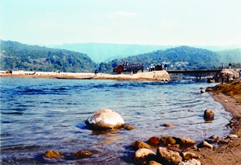
Dhaka has several excellent cinema halls, which screen British, American, and Bangladeshi films. All district towns have their own cinema halls. Cultural shows and Bengali and translated western plays are staged frequently at several venues in Dhaka including Bangladesh Shilpakala Academy, Guide House and British Council auditorium.
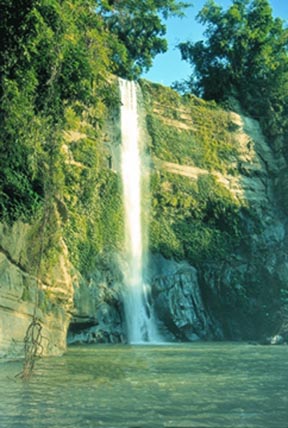
Most festivals in Bangladesh sprung from religious rituals, but the fairs have their roots in the very heart of the people, irrespective of religion, caste or creed. The biggest Muslim festival of the country is eid-ul fitr, followed by eid-ul azha. Other widely celebrated Muslim rites are Eid-e-Miladunabi, shab-e-barat, ashura (I0th day of muharram), and Jamat-ul-Wida. Festivals like durga puja of Hindus, christmas of Christians, buddha purnima of Buddhists are also celebrated with fervour. Among the non-religious festivals Bengali New Year's Day, Victory Day (16 December) and Independence Day (26 March) are celebrated nation wide. All these festivals are marked as public holidays. Other national holidays are ekushey february (21st February, international mother language Day in memory of the martyrs of the Bengali language movement), and May Day. At langalband near Sonargaon (about 27 km from Dhaka) a very sacred festival is observed by the Hindu community every year on the last day of Chaitra (last Bengali month) by way of bathing in the water of the Shitalakshya.
Pink pearls are the best buy in Dhaka. These natural pearls are unparalleled in lustre. A wide range of gold and silver ornaments, and silver filigree work are favoured by many travelers. Among the best buys are brass and copperware trays, wall decorations and vases with delicate hand-made engravings and filigree work. Products made from the hides and skins of animals and reptiles, intricate wood carvings, cane and bamboo products, conch shell bangles, embroidered quilts, jamdani and silk fabrics are also popular.
Beside local and oriental food, western food is available at all major hotels and restaurants in larger cities for the tourists. But local dishes are more exotic and tasty. Misti dohi (sweetened yogurt), a variety of halwas (sweetened pastes) made from egg, carrot, sooji or wheat cream, almond, pistachio, and nuts, sandesh, jorda, firni or rice flour cooked in milk, sugar and flavouring. rasgolla, kalojam and rosmalai are favourite sweets. Varieties of pithas such as chitoi, dhupi, takti, andosha, puti, bhapa and pua are available, but the most artistic and attractive is nakshi pitha. Among the fruits the most delicious are mango, litchi, banana, papaya, jackfruit, watermelon, pineapple, coconut and orange.
Recently the Bangladesh government has adopted a plan for the promotion of tourism by highlighting the country's natural phenomenon under the scheme styled as 'Rupamoy Bangladesh' (Beautiful Bangladesh). [Syed Rashidul Hasan]
